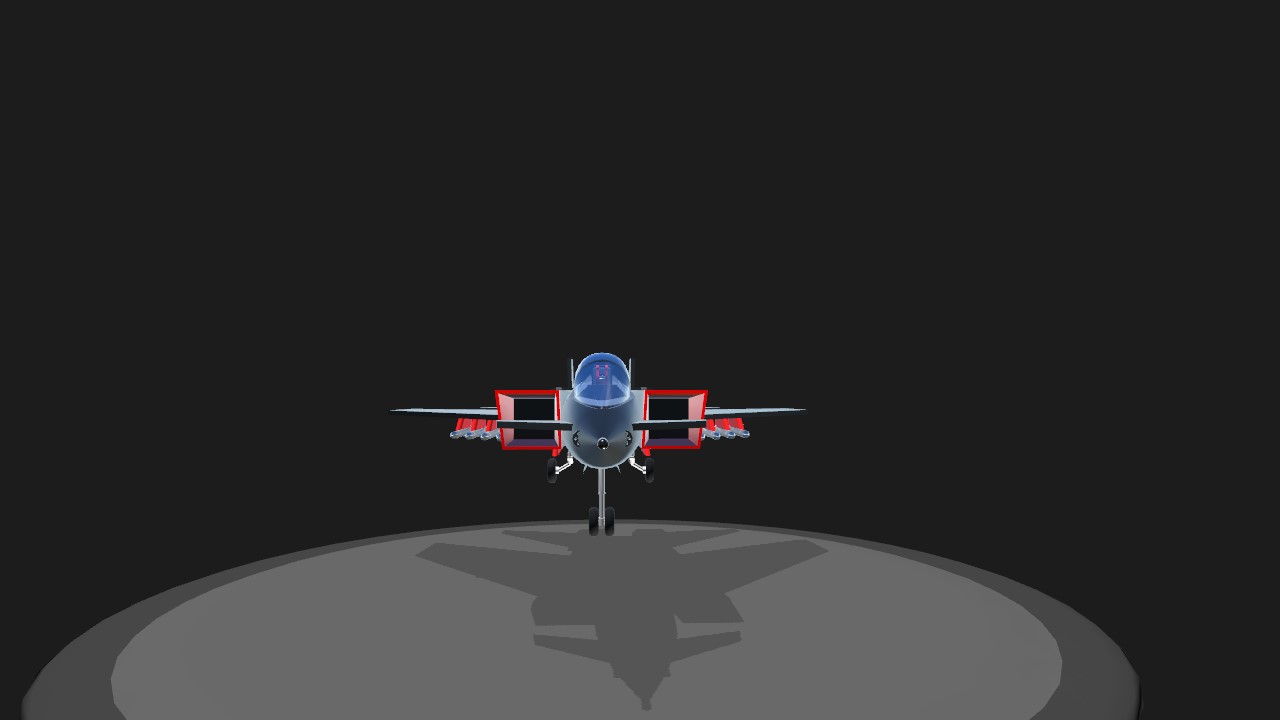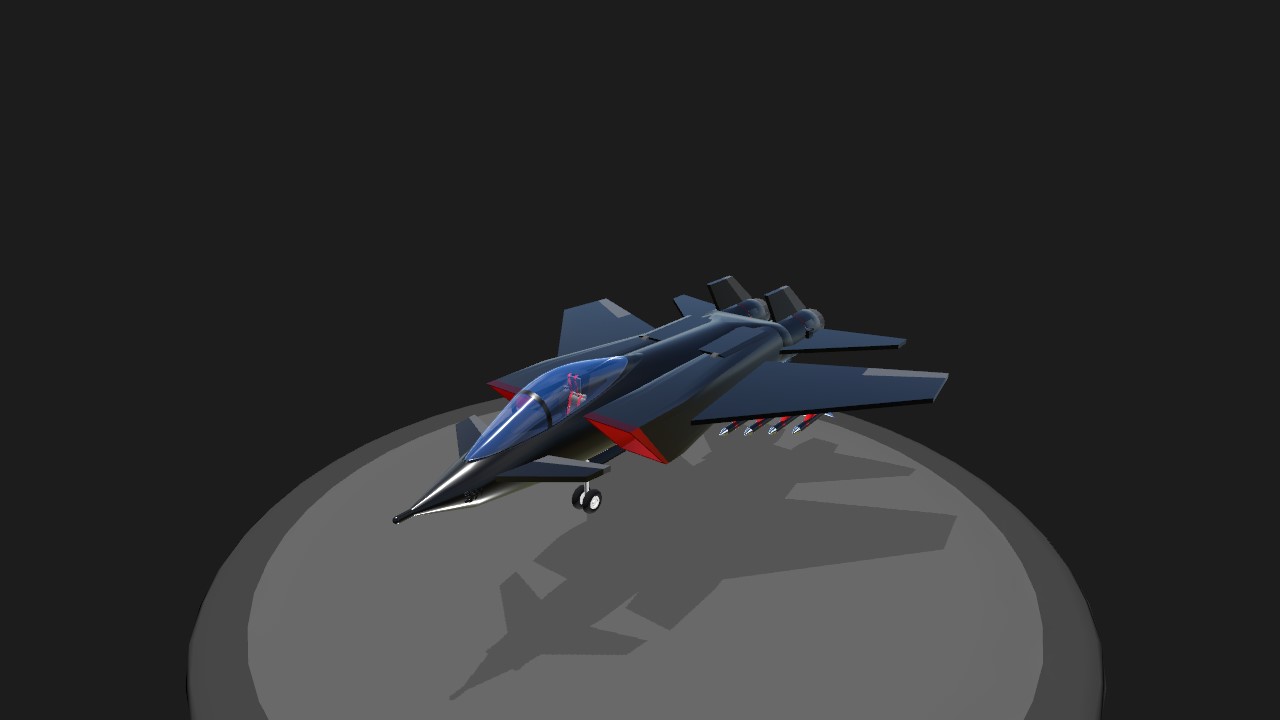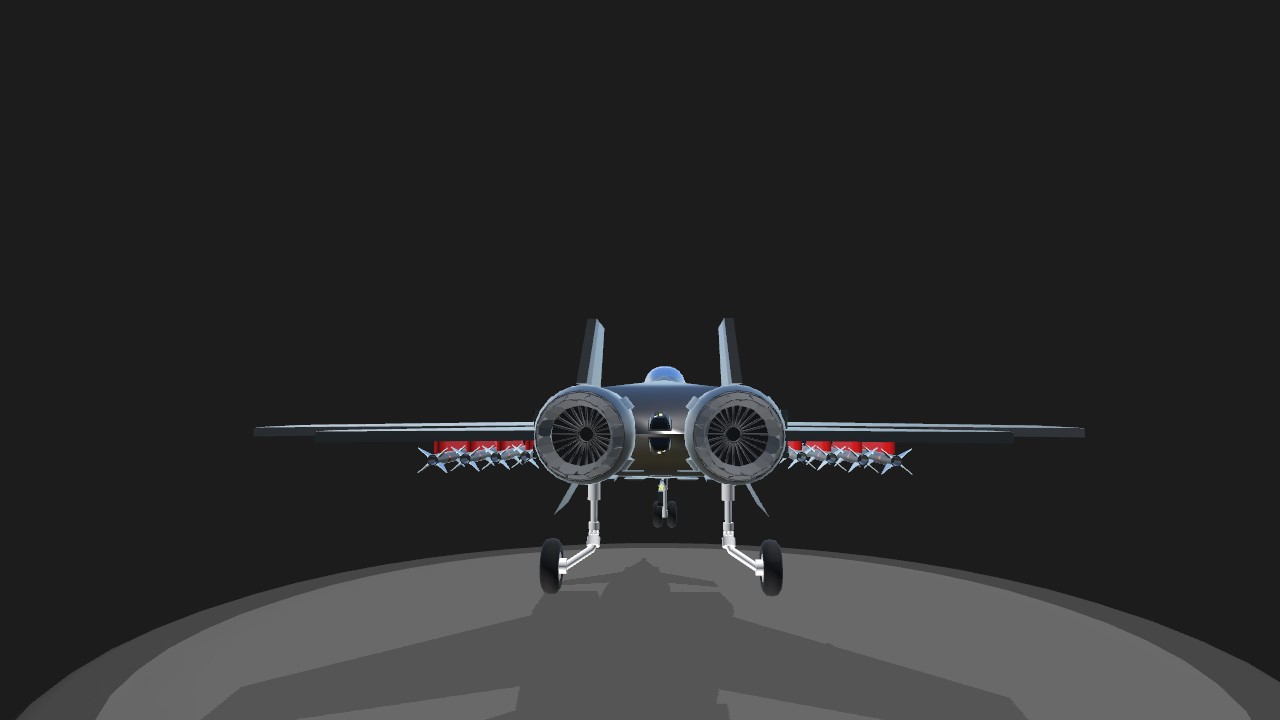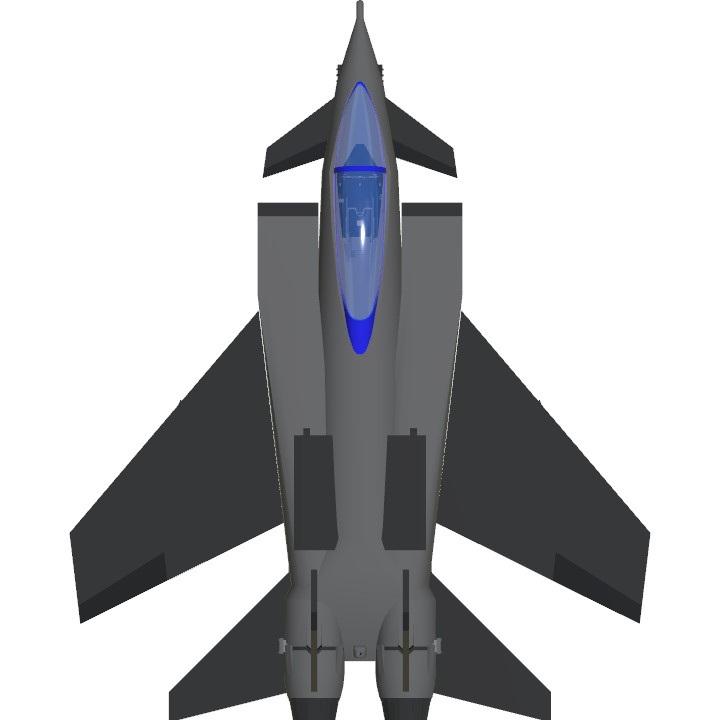Story:
Initially designed by my old old account, the Heron was a fast, agile, and armed-to-the-teeth dogfighter. Accredited with its remarkable stability during high-speed flight, the Heron became an overnight success uopn first deployment. In January of 2022, the IMUL Aerospace Scrapyard Crew came across a degraded Heron fuselage and thought to refurbish it. Unfortunately, it was deemed to be damaged beyond repair and the project was abandoned. A quest was started by IMUL’s Administration to track down blueprints or other schematics for this aicraft, which also returned fruitless. Determined to reproduce the aircraft in all of its former glory, IMUL asked former Heron pilots and engineers if they could describe the aircraft based on memory. “It had canards as well as traditional stabilizers, the engines were mounted between the fuselage and the wings, and it had a lot of weapons” was the most amount of detail these individuals could remember. This was just enough! In February of the same year, IMUL Administration ordered the commencement of the new aircraft and began work on the new design. In typical IMUL fashion, most aspects were kept the same, albeit with minor tweaks and improvements:
Changes:
After the overhaul of the Wright Isles Navy’s USS Beast, now complete with arrester wires and a catapult, a tail hook and a catapult attachment point had to be fitted to the aircraft.
New Oberfäst OF-8 Nitrous Oxide Afterburning Turbofan engines were fitted to the tail of the aircraft rather than between the wings. Engineers would later find out that this improved roll authority and further improved overall stability.
New Generic Motors GM-24 Hellhound Air to Air missiles were mounted four to a wing, making this aircraft the king of all dogfights.
The conventional guns were replaced with new Oscar-Zulu OZ-12 Gatling Lasers to ensure outright superiority in close-range combat.
The addition of better air brakes and drag chutes allow for slower and more controlled landing.
The addition of a prototype “Backrooms Tank” allows for nearly infinite fuel. Further testing of this technology is underway.
ENGINEER’S NOTE:
Jimbo fell into the fuel tank and we don’t know where he is anymore. Consider installing a baby gate to make sure we don’t lose anymore ground crew.
And last but not least, the cockpit received a complete overhaul with all-new digital instruments, most of which were taken out of other aircraft in the IMUL fleet, such as the computerized instruments from the Wasp, and the vertical speed indicator from the VR Glider
(Quick fourth wall break: Some of the new instruments were made exclusively by me, such as the TRIM indicator (not present on the wasp), the faster and more responsive BRK indicator (slower on the wasp), and the tweaking of the weapons panel to show the correct amount of interceptors after the missiles got renamed).
Specifications
General Characteristics
- Created On iOS
- Wingspan 30.9ft (9.4m)
- Length 38.6ft (11.8m)
- Height 10.6ft (3.2m)
- Empty Weight N/A
- Loaded Weight 22,244lbs (10,090kg)
Performance
- Power/Weight Ratio 6.061
- Wing Loading 79.9lbs/ft2 (390.0kg/m2)
- Wing Area 278.5ft2 (25.9m2)
- Drag Points 4944
Parts
- Number of Parts 148
- Control Surfaces 6
- Performance Cost 1,039






